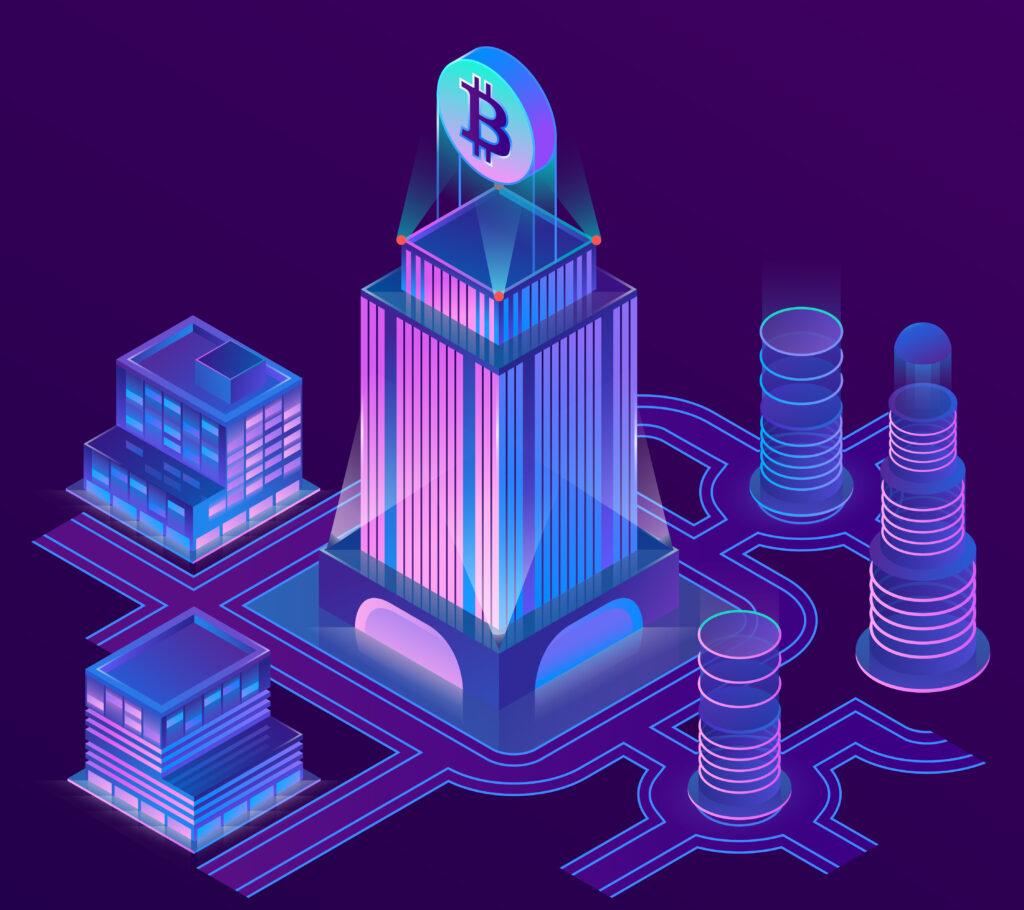Blockchain isn’t just about Bitcoin anymore. In 2025, it’s powering real-world innovation—from finance to logistics to identity. Here are 5 powerful ways this foundational technology is reshaping how the world works.
1. Tokenization: Real-World Assets on the Blockchain

Blockchain is enabling fractional ownership of assets like real estate, bonds, and art. Companies like Securitize are letting investors trade tokenized shares of private firms directly on-chain using verified digital tokens.
Governments and institutions are also issuing smart bonds, which settle instantly and transparently via programmable finance. This makes issuing, tracking, and trading bonds faster and more automated.
2. Next-Level Supply Chain Transparency
With blockchain, consumers and businesses can trace products from origin to delivery. Platforms like OpenSC offer QR-code-based tracking of ethical sourcing, especially in food and commodity supply chains.
Enterprises, guided by firms like Deloitte, are implementing blockchain+IoT systems (often using Hyperledger fabric) to track vaccines or pharmaceutical shipments—reducing errors, improving traceability, and optimizing compliance workflows.
Blockchain also allows token-based incentive systems. In agriculture, smallholder farmers receive stable digital tokens for sustainable practices, improving transparency and financial inclusion in smart supply systems.
3. Self‑Sovereign Digital Identity & Zero‑Knowledge Privacy
Blockchain-based identity protocols now give users ownership of their data via Self-Sovereign Identity (SSI). Using Decentralized Identifiers (DIDs), individuals securely verify credentials across platforms without exposing unnecessary personal data.
Privacy-preserving techniques like zero-knowledge proofs are enabling applications in healthcare, finance, and government—letting institutions verify identity without storing or exposing sensitive personal information.
China’s national RealDID system offers an example: a blockchain-powered, real-name ID system allowing privacy-compliant cross-border verification for regulated services.
4. AI-Enhanced Smart Contracts & Predictive Protocols
Blockchain is evolving with AI-powered smart contracts—contracts that adapt and respond to real-time data. These predictive protocols can adjust terms dynamically, for example in insurance or logistics, improving automation and efficiency.
Decentralized AI marketplaces are also emerging, enabling developers to train, share, and monetize ML models securely—powered by token rewards and community governance.
5. Blockchain as Critical Infrastructure for Finance & Society
Major financial players like BlackRock, JPMorgan, and Franklin Templeton are adopting blockchain-based systems to tokenize assets, automate settlements, and drive transparency in capital markets.
Regulatory changes—like Project Crypto in the U.S.—are making it easier to launch tokenized securities under clear crypto laws, helping integrate blockchain with traditional finance.
Meanwhile, analysts describe blockchain adoption as a structural reset for modern finance, embedding trust via decentralized networks instead of centralized institutions.
🚧 Real-World Case Studies
OpenSC: Tracks ethical supply chain claims via blockchain QR-code scanning, used by Nestlé and WWF to bolster transparency and sustainability.
IBM Food Trust & Hyperledger Pilots: Blockchain apps tracking drugs and medical logistics in real-time, delivering audit-ready, tamper-proof records for global clinical research.
Securitize: Tokenizes private company shares for institutional and retail participation—raising $75M for projects like beauty brands and launching regulated digital securities platforms.
⚠️ Challenges to Overcome
| Challenge | Description |
|---|---|
| Scalability | High volume, low-latency systems remain costly to scale globally |
| Regulation & Compliance | Negotiate global privacy laws like GDPR vs immutable ledgers |
| Education & Trust | Blockchain still faces skepticism among enterprises and consumers |
🧭 Final Thoughts: A New Infrastructure Layer
Blockchain has quietly evolved into a mission-critical layer of infrastructure—driving tokenized finance, supply automation, and identity control. In 2025, we’re seeing not just novel applications, but enterprise adoption that underscores blockchain’s permanence in innovation—far beyond speculative crypto.
For developers, entrepreneurs, and organizations, the message is clear: explore blockchain use cases not as possibility, but as practical tools for trust, transparency, and efficiency.
❓ FAQs (Voice & Search Optimized)
1. What is tokenization in blockchain?
Tokenization converts real-world assets—like property or stocks—into digital tokens on-chain, allowing fractional ownership and easier trading.
2. How is blockchain improving supply chain management?
Blockchain offers tamper-proof tracking, automated smart contract-based logistics, and transparent sourcing data—ideal for high-stakes industries like pharma and food.
3. What is self‑sovereign identity (SSI)?
SSI lets users control their own credentials using Decentralized Identifiers (DIDs) and verifiable credentials, reducing dependency on centralized identity providers.
4. Are smart contracts becoming smarter?
Yes—AI-enabled smart contracts can adjust their own behavior based on real-time inputs like price, location, or environmental data.
5. Is blockchain only for crypto?
Not anymore. It’s now used by governments and enterprises for digital identity, tokenized financing, supply chain traceability, and more.
